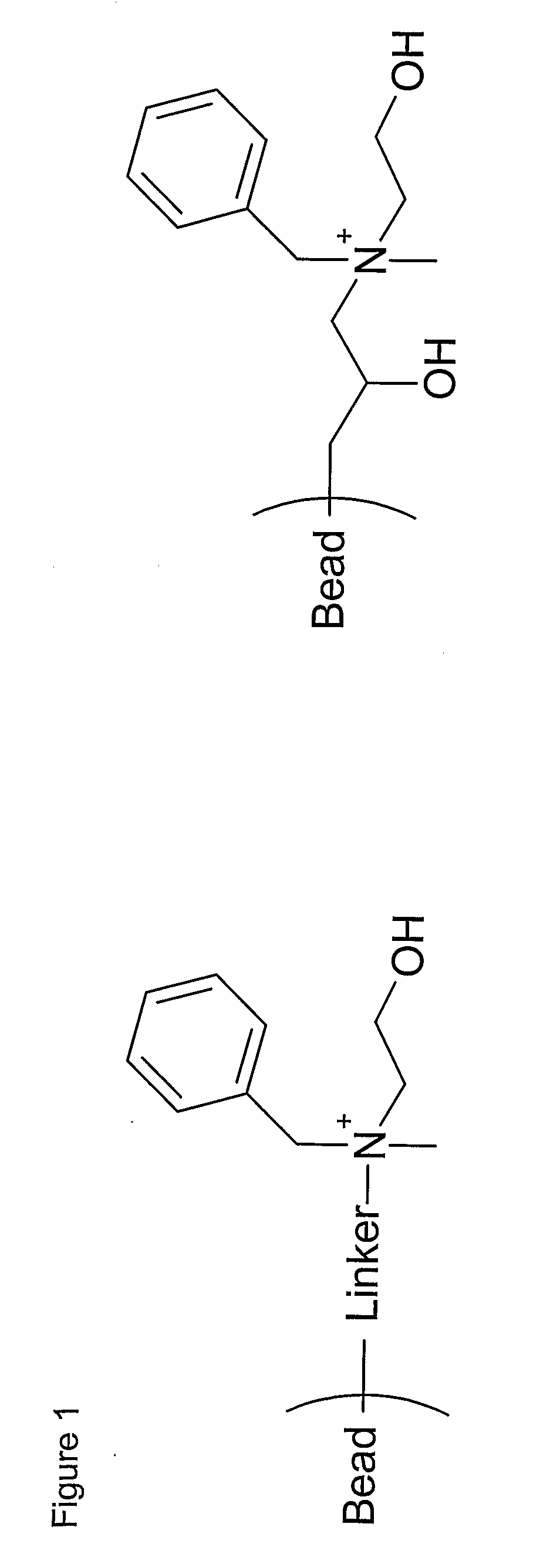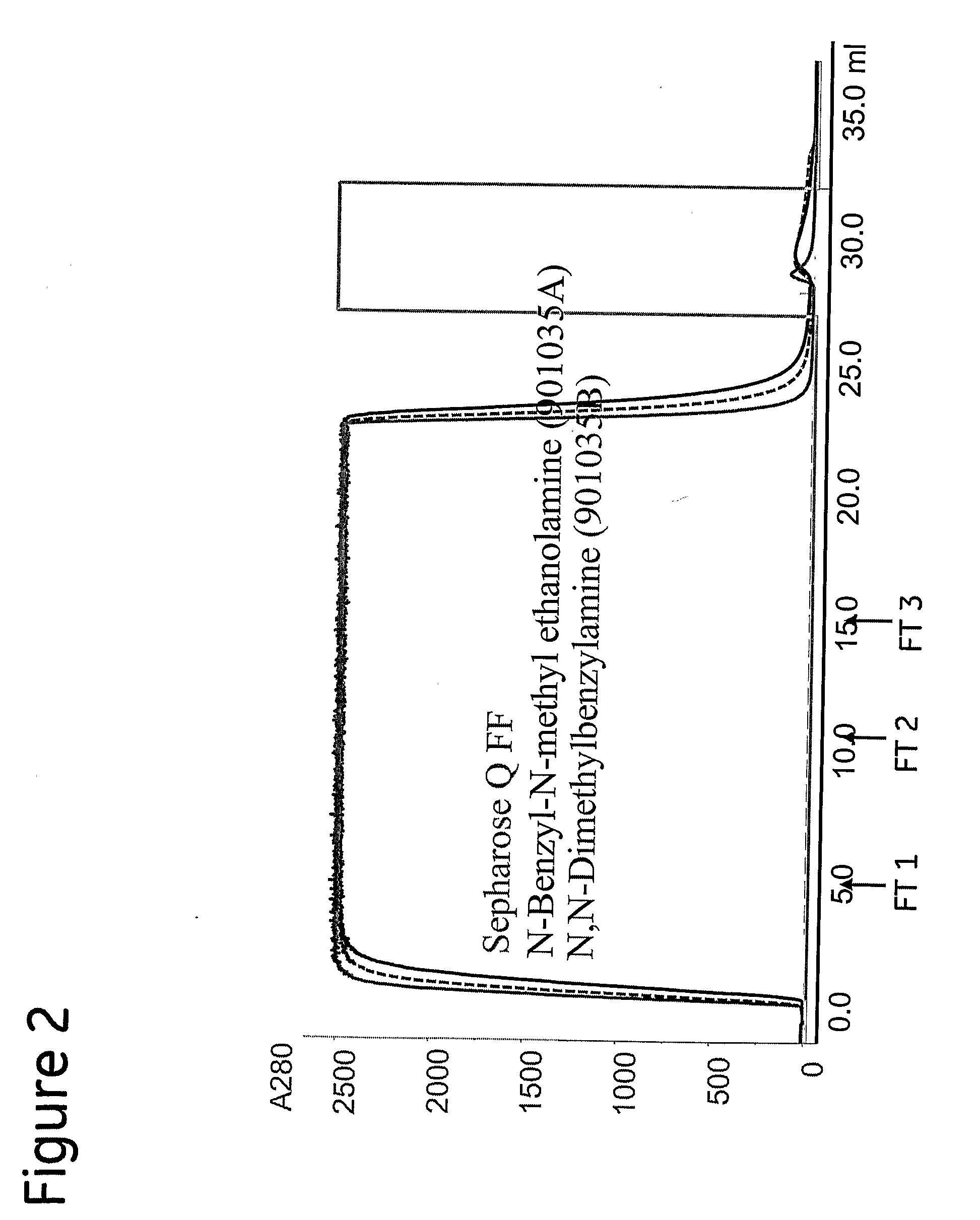Chromatography Ligand
a technology of chromatography and ligands, applied in the field of new chromatography ligands, can solve the problems of time-consuming and laborious, impure products, and difficult to use the supernatant for other purposes, and achieve the effect of improving the efficiency of chromatography and reducing the cost of chromatography
- Summary
- Abstract
- Description
- Claims
- Application Information
AI Technical Summary
Problems solved by technology
Method used
Image
Examples
example 1
Preparation of Separation Matrix According to the Invention
Preparation of BMEA Sepharose Fast Flow
[0067] One embodiment of the method of preparing a separation matrix according to the invention is shown below, starting from a crosslinked agarose gel (Sepharose™ 6 Fast Flow, GE Healthcare, Uppsala, Sweden).
A. Introduction of Allyl Group on the Matrix
[0068] Sepharose 6 Fast Flow was activated with allyl glycidyl ether as follows: 100 ml of Sepharose 6 Fast Flow was suction dried, mixed with 0.3 g of NaBH4, 12 g of Na2SO4 and 35 ml of 50% aqueous solution of NaOH. The mixture was stirred for 1 hour at 50° C. After addition of 100 ml of allyl glycidyl ether the suspension was left at 50° C. under vigorous stirring for an additional 16 hours. After filtration of the mixture, the gel was washed successively, with 500 ml distilled water, 500 ml ethanol, 200 ml distilled water 200 ml 0.2 M acetic acid and, 500 ml distilled water.
[0069] Titration gave a degree of substitution of 0.22 ...
example 2
Purification of Antibodies in the Flow-through
example 2a
)
Disposition
[0072] Under non-binding conditions, sample containing approximately 50 mg mAb1 were loaded onto prototype 901035 A (N-benzyl-N-methyl ethanolamine) at approximately 5 and 12 mS / cm. Flow-through fractions (FT) were collected at 5, 10 and 15 column volumes (CV). Fractions from the elution peak were pooled. FT fractions were analysed for HCP and Protein A content.
[0073] To confirm that the chromatographic performance was not unique for one particular mAb, the chromatographic runs were repeated using a sample containing mAb2 at pH 6.0 and approximately 12 mS / cm. The performance of the prototype was first evaluated with analytical SEC. Selected fractions were analysed for HCP and Protein A content. After screening the fractions with SEC selected fractions were sent for HCP and Protein A analysis.
[0074] To test the rProtein A clearance of the prototype, MAb1 was spiked with 1% (w / w) recombinant Protein A (rPrA). The prototype was injected with a sample volume corresponding...
PUM
| Property | Measurement | Unit |
|---|---|---|
| Volume | aaaaa | aaaaa |
| Volume | aaaaa | aaaaa |
| Volume | aaaaa | aaaaa |
Abstract
Description
Claims
Application Information
 Login to View More
Login to View More - R&D
- Intellectual Property
- Life Sciences
- Materials
- Tech Scout
- Unparalleled Data Quality
- Higher Quality Content
- 60% Fewer Hallucinations
Browse by: Latest US Patents, China's latest patents, Technical Efficacy Thesaurus, Application Domain, Technology Topic, Popular Technical Reports.
© 2025 PatSnap. All rights reserved.Legal|Privacy policy|Modern Slavery Act Transparency Statement|Sitemap|About US| Contact US: help@patsnap.com



